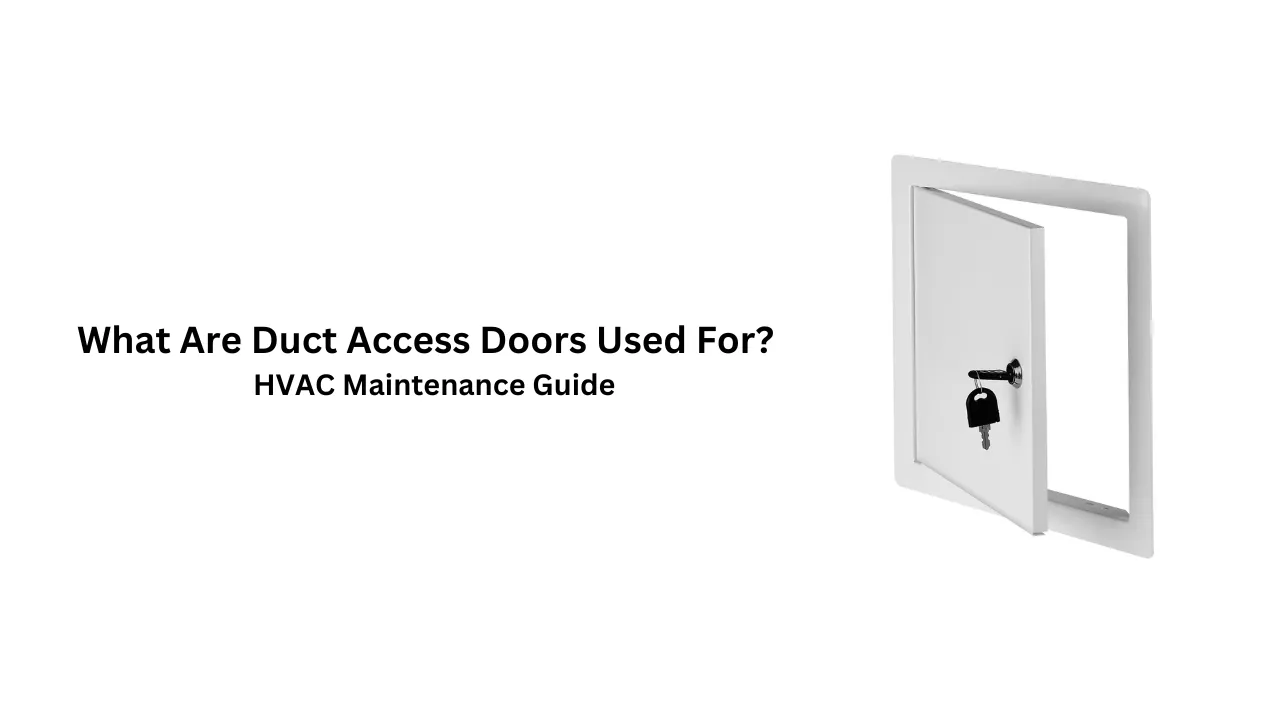Duct access doors are essential components in HVAC systems, providing convenient access to hard-to-reach areas within ductwork. They support tasks like cleaning, inspection, and repairs, which are crucial for keeping the system running smoothly and maintaining accessibility throughout the network.
Available in many sizes to suit different settings, these doors enable direct access to ductwork without dismantling sections. This streamlined design simplifies upkeep, reducing the time and effort involved in routine maintenance. By enhancing long-term functionality and efficiency, duct access doors also contribute to significant savings overtime.
Applications of Duct Access Doors
In residential applications, particularly in larger homes and multi-story buildings, duct access doors offer convenient access for essential upkeep. They help promote a safer and more comfortable indoor environment.
In commercial and industrial settings with extensive ductwork, duct access doors play a critical role in facilitating regular upkeep to support air quality and energy efficiency. For instance, a door like the HDSS-6020 duct access door benefits heavy-duty HVAC systems, providing easy access to applications that demand frequent inspections. Designed for large commercial and industrial facilities, this type of door ensures maintenance tasks can be performed efficiently, helping to keep systems running smoothly and effectively.
Other Benefits of Duct Access Doors
Beyond supporting basic maintenance, duct access doors offer several advantages that enhance the performance and longevity of HVAC systems. Here are some of them:
- Enhanced Humidity and Moisture Control: Access doors allow technicians to check and adjust humidity levels within the ductwork, preventing the buildup of excess moisture. By keeping humidity in check, access doors help reduce the risk of mold growth and other moisture-related problems that could compromise air quality and system efficiency over time.
- Effective Pest Control: These doors provide entry points for targeted pest inspections and treatments, making managing and preventing infestations easier. Regular access for pest control helps protect the duct system from damage and prevents contaminants from entering the airflow.
- Ensured Compliance with Safety and Efficiency Standards: With easy access to inspect and maintain duct systems, access doors help ensure the system meets regulatory standards for safety and efficiency. Routine checks made possible through these doors allow building managers to stay updated with code requirements, minimizing non-compliance risk.
- Simplified Ventilation Upgrades: Component upgrades become quicker and more efficient, as technicians can access specific areas without affecting the entire system. Duct access doors keep these updates straightforward and reduce overall disruption.
- Reduced Fire Hazards: Duct access doors offer essential entry points for inspecting fire and smoke barriers in duct systems, preventing incidents by ensuring these components function properly.
Common Types of Duct Access Doors
Did you know that poorly maintained ductwork can drive up energy costs by as much as 30%? Regular inspections and cleaning can help improve energy efficiency and enhance indoor air quality, ensuring your system works at its best!
That said, installing duct access doors is essential to prevent potential issues. But before doing so, it’s important to consider factors like intended use, materials, and specific applications. Here’s a closer look at these details:
| Types of Duct Access Door | Uses | Materials | Applications |
| Standard Duct Access Door | General Inspection, Cleaning, and Maintenance | Steel/Aluminum | Residential/Commercial |
| Insulated Duct Access Door | Insulated Access for Temperature Control | Galvanized Steel with Fiberglass Insulation | Residential/Commercial |
| Fire-Rated Access Door | Fire and Smoke Barrier | Fire-rated Stainless Steel/ Gauge Steel | Commercial/Industrial |
| Self-Stick Duct Access Door | Convenient Access to Sheet Metal Ducts | Galvanized Steel | Commercial/Industrial |
FAQs
Q1: Are Duct Access Doors Only for Commercial and Industrial Buildings?
While duct access doors are commonly found in large-scale HVAC systems, they are also valuable additions to residential setups, particularly in larger homes with complex ductwork. As discussed, these doors provide convenient entry points for maintenance tasks, allowing homeowners to keep their systems running efficiently.
Even in residential settings, access doors simplify cleaning, inspections, and minor repairs, contributing to better air quality and improved system performance.
Q2: What Are the Basic Size Requirements for Duct Access Doors?
The minimum size requirement for duct access doors depends on building codes, industry standards, and HVAC system needs. Doors should be large enough to allow safe and convenient maintenance access, with careful consideration of placement. They typically need near components that need regular maintenance, such as filters, coils, and fans, and should be sized appropriately for easy access.
Q3: Can I Install a Duct Access Door Myself?
Yes, duct access doors are generally easy to install, but you can also opt to have a professional handle the task. Be cautious, as improper installation could lead to leaks and reduce system efficiency.
Wrapping It Up
Duct access doors may be overlooked, but they provide invaluable access to essential parts of an HVAC system. By allowing for easy maintenance, repairs, and inspections, these doors contribute to the system’s overall efficiency, air quality, and lifespan. So, next time you see a small panel on a duct, remember it’s more than just a door — it’s a gateway to better air quality, energy efficiency, and system longevity.
Also Read:

